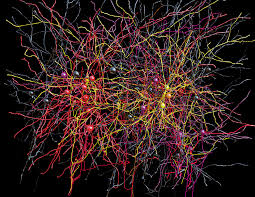A Landmark Collaboration in Neuroscience
In a groundbreaking study, physicists and neuroscientists from the University of Chicago, Harvard, and Yale have made significant strides in understanding neuronal connectivity. Their research, published in Nature Physics on January 17, 2024, moves beyond the biological characteristics of individual organisms, focusing instead on the general principles of networking and self-organization that govern how neurons connect.

A New Perspective on Neuronal Networks
The team, led by Stephanie Palmer, PhD, Associate Professor of Physics and Organismal Biology and Anatomy at UChicago, approached this complex issue with a blend of physics and biology. Contrary to the expectation that simple models would only provide a rough approximation, their findings yielded deep insights into neuronal connectivity, applying to a variety of model organisms and potentially to non-biological networks, like social interactions.
The Significance of ‘Heavy-Tailed’ Connections
Neurons communicate through an elaborate web of synapses, where the strength of connections varies. A key finding of the study is the identification of a “heavy-tailed” distribution in these connections. This pattern, characterized by a few connections being significantly stronger than others, forms the basis of brain circuitry enabling thought, learning, communication, and movement. This discovery challenges the previously held belief that such patterns were organism-specific, suggesting instead that they arise from fundamental networking principles.
Beyond Biology: Understanding Networking in Neurons
Deciphering the Connectome through Hebbian Dynamics
To delve into how neurons form connections, the team, including Christopher Lynn, PhD, Assistant Professor of Physics at Yale University, and Caroline Holmes, PhD, a postdoctoral researcher at Harvard University, examined connectomes from various lab animals. They employed a model based on Hebbian dynamics, a concept asserting that neurons strengthening their connections through simultaneous activation. This model successfully replicated the observed heavy-tailed connection strengths across different species.
Clustering: A Universal Networking Phenomenon
An intriguing aspect of their findings is the explanation of clustering in neural networks, akin to social networking scenarios where mutual acquaintances lead to new connections. This phenomenon, observed across various organisms, underscores the universal principles of neural networking.
Balancing Order and Randomness in Brain Circuits
Despite these patterns, the researchers acknowledge the inherent randomness in biological systems. Neurons often disconnect and form new connections, a process essential for preventing overly dominant connections. The inclusion of randomness in their model was crucial for its accuracy, balancing the deterministic Hebbian dynamics with the unpredictability characteristic of real brains.
Implications and Future Directions
This research not only sheds light on the fundamental principles of brain organization but also opens the door to exploring other types of networks. The interdisciplinary approach, combining physics, big data analysis, and neuroscience, sets the stage for future studies that could extend these principles beyond the realm of the brain.